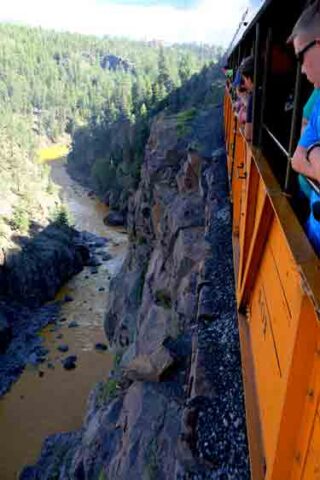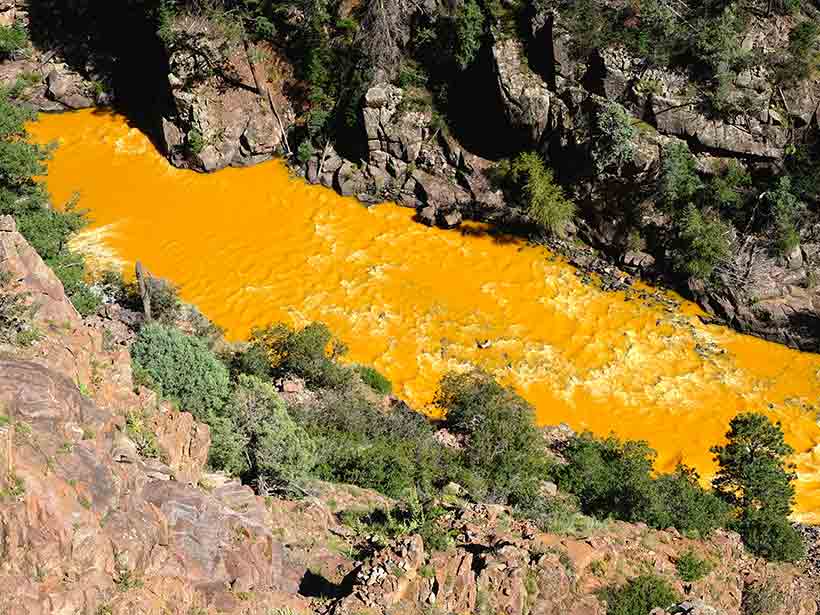On August 5, 2015, Environmental Protection Agency workers accidentally released over three million gallons of water, residing underground, from the Gold King Mine near Silverton, in the San Juan Mountains of southwest Colorado. The EPA estimates that some 403,000 kilograms of metals, mainly cadmium, copper, lead, and mercury, poured into the Animas River. The contamination reached past the confluence of the Animas and the San Juan—more than 300 miles. For well over a week following the spill, municipal and community water systems and irrigation ditches in San Juan County, including those of the Navajo reservation, were not allowed to draw water from the rivers. Domestic well owners were warned against using their water, and livestock were not allowed near the rivers. This spring, there is a concern that the forecasted high runoff from the San Juan Mountains may redistribute the contaminants.
Since then, a great deal of criticism has been heaped on the EPA and other government agencies. However, the purpose of this introduction is not to voice displeasure with them, but rather to use the Gold King Mine disaster as a prime example of the kinds of concerns we face in trying to sustain ourselves on a habitable Earth.
Many nations struggle with the huge, unfinished efforts of dealing with thousands of “Gold King Mines” of one version or another. As Brian Palmer writes in onEarth, “We’ve created a situation where one bad call can contaminate 300 miles of river with toxic metals. That’s a systemic failure, not an individual failure.”
We know that we must solve problems; in doing so, can we avoid creating others?
If we have already identified a problem, yet “systemic failures” result in inattention or indecision, what then is the proper course to take? How do we effect a more rapid course of action? Based on what we know about a situation, is it ethical to do nothing? On the other hand, making an effort to address a situation could create its own set of impacts. We know that we must solve problems; in doing so, can we avoid creating others?
The decisions that we make in addressing our many grand challenges will require informed and timely evaluation, rooted in the soundest science possible. But these decisions must also factor in ethics, and, in numerous cases, geoethics. The speed of our decision-making may meet with greater success if geoscientists, in our passion to act more responsibly, openly present the ethical issues we grapple with while assessing the body of scientific evidence.

Working with my colleagues Professor David Mogk, University of Montana, and Monica Bruckner, Science Education Resource Center, Carleton College, I recently had the opportunity to co-author a chapter on the teaching of geoethics for the upcoming AGU publication Scientific Integrity and Ethics in the Geosciences: A Handbook and History. In this chapter, we discuss why geoethics should be considered an important part of the educational experience of both undergraduate and graduate students in the geosciences, and we offer guidance as to how geoethics can be folded into the curriculum. One setting of great potential lies in introductory-type classes, such as Physical Geology, Earth History, or Earth Environment. In these courses, students of diverse backgrounds and interests would not only learn basic geoscience concepts and processes, but could also discover, through examples including case studies, how the geosciences have and will affect their lives. We hope that you will find our arguments very compelling!
In a recent Opinion in The New York Times Sunday Review, Edward O. Wilson writes, “The step toward sustained coexistence with the rest of life is partly a practical challenge and partly a moral decision. It can be done, and to great and universal benefit, if we wish it so.” I suspect that a suitably learned community in geoethics will enhance the needed global effort to sustain human existence and our environment on Earth.
—John W. Geissman, Editor in Chief, Tectonics; email: [email protected]
Citation:
Geissman, J. W. (2016), Sustaining existence: A geoethical dilemma, Eos, 97, https://doi.org/10.1029/2018EO050383. Published on 20 April 2016.
Text © 2016. The authors. CC BY-NC-ND 3.0
Except where otherwise noted, images are subject to copyright. Any reuse without express permission from the copyright owner is prohibited.

